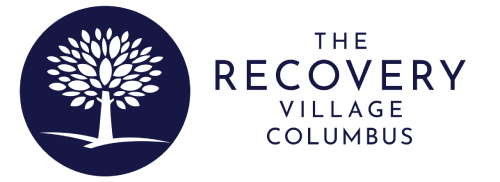Key Takeaways
- Heroin is a highly addictive opioid with severe health and social consequences, including increased risk of disease and socioeconomic issues.
- Physical indicators of heroin addiction include drastic weight loss, poor hygiene, track marks, and flu-like symptoms.
- Heroin track marks are visible needle marks that can appear on various parts of the body and indicate the level of heroin use and dependence.
- Chronic heroin use leads to serious health complications like infections, organ damage, and brain function deterioration.
- Behavioral signs of heroin addiction include increased risk-taking, changes in mood, social withdrawal, and financial problems.
- Heroin addiction disrupts daily routines, causing irregular sleep patterns, neglect of personal care, and abandonment of responsibilities.
- Social relationships suffer due to heroin addiction, leading to isolation and complicating recovery efforts.
- Psychological signs of heroin addiction include emotional instability, confused thinking, and the development of mental health conditions.
- The cycle of heroin addiction involves stages from experimentation to addiction and relapse, requiring comprehensive treatment for recovery.
- Heroin withdrawal is a difficult phase with physical and psychological symptoms and a high risk of relapse without proper treatment.
Heroin and Its Impact on Health
Heroin is an opioid drug processed from morphine, a natural substance from the seedpods of various poppy plants. Its use has significant effects on both individual and public health.
Research indicates that heroin is highly addictive due to its potent effects on the brain’s reward system. Its effects lead to a reinforcement of drug-taking behavior through the release of neurotransmitters like dopamine. This can cause devastating medical and social consequences.
The rise in heroin use has been attributed to various factors. One factor is its availability as a cheaper alternative to prescription pain relievers. Another is the misconception that pure heroin is safer than less pure forms that require injection. However, most users eventually transition to injection use, increasing the risk of overdose and infectious disease transmission.
Genetic factors play a role in heroin addiction. Certain genetic variants increase susceptibility. Socioeconomic factors such as poverty and mental health issues are also correlated with higher rates of heroin addiction.
This Season, Give Yourself the Gift of a Fresh Start.
Whether you are struggling with addiction, mental health or both, our expert team is here to guide you every step of the way. Don’t wait— reach out today to take the first step toward taking control of your life.
The emergence of synthetic opioids like fentanyl has further complicated the crisis due to their high potency and lower cost.
Addressing heroin addiction requires an integrated public health approach. That approach should focus on prevention, treatment, and recovery support.
Physical Signs of Heroin Addiction
Heroin addiction manifests through various physical signs that can signal the need for immediate attention and intervention.
Notable changes in appearance are often the first indicators, including:
- Drastic weight loss
- Poor hygiene
- Concealing the marks of injection
These physical symptoms are often accompanied by flu-like symptoms, such as frequent sniffles or nose rubbing.
Another significant sign of heroin misuse is the presence of track marks. These are visible needle marks that can be found on the arms, legs, or other body parts.
Heroin users may also have dark circles under the eyes, skin infections, and hair loss.
These signs often co-occur with short-term effects like drowsiness, pinpoint pupils, slurred speech, and irregular breathing patterns.
Long-term heroin use can lead to a host of serious health complications. These may include abscesses, infections of the heart lining and valves, and deterioration in brain function, affecting decision-making and stress management.
Recognizing these physical signs is crucial for the timely treatment of heroin addiction. After all, heroin addiction is a treatable condition with the potential for recovery when addressed with appropriate medical and psychological support.
Heroin Track Marks and Their Locations
Heroin track marks are distinctive physical indicators of intravenous drug use.
These marks are characterized by visible signs on the skin. Examples include scrapes, bruises, discolorations, or small puncture marks. Initially, track marks may resemble deep bruising, which eventually scabs over, leaving dark, linear scars along the veins. They are often found on the forearms, where veins are easily accessible and can be concealed. However, with continued use, they may appear on the face, feet, neck, hands, and groin.
Repeated injections at the same site can lead to vein damage. It can cause the veins to collapse and force individuals to seek new injection sites. In turn, it can lead to a pattern of marks across various parts of the body.
The frequency and pattern of these injections can be indicative of the level of heroin use and dependence. Due to the visibility of these marks, individuals may attempt to hide them with clothing.
Track marks can also increase the risk of infection and other serious health complications due to the damage inflicted on the skin and underlying tissues.
It’s important to recognize that the appearance and longevity of heroin track marks can vary significantly from person to person. Marks might be influenced by factors such as skin tone, location on the body, and individual healing rates. If track marks are observed on a loved one, it is a strong indication of intravenous drug use. Therefore, they may warrant concern and the need for professional intervention.
Long-term Health Complications of Chronic Heroin Use
Chronic heroin use carries with it a multitude of serious health complications, affecting various systems of the body.
The sharing of injection equipment often leads to the transmission of blood-borne viruses, including hepatitis B and C and HIV. These conditions can then be passed on to sexual partners and children.
Additionally, lung complications, such as pneumonia and tuberculosis, are common. This is because of heroin’s depressive effect on respiration and the general poor health of users.
Street heroin often contains additives that do not dissolve well and can clog blood vessels. This can lead to organ damage.
Snorting heroin can also damage nasal tissues and lead to septum perforation.
Chronic use can cause severe constipation, stomach cramps, and malnutrition due to neglect of dietary needs.
Long-term heroin use can also result in serious cardiovascular issues, such as heart attacks and strokes. It may also cause a weakened immune system, increasing susceptibility to infections.
There is also evidence of brain structure changes and deteriorated white matter, affecting decision-making and behavior regulation. These physiological changes are compounded by the development of heroin use disorder. This condition is characterized by uncontrollable drug-seeking behavior, tolerance, and physical dependence, with severe withdrawal symptoms upon cessation.
Given the severity of these health complications, it is crucial to understand the full scope of heroin’s impact on an individual’s health and well-being. The risk of overdose remains high with each use, potentially leading to coma or death. Recognizing these risks underscores the importance of seeking comprehensive treatment for heroin addiction.
Behavioral Signs of Heroin Addiction
Heroin addiction often manifests through a spectrum of behavioral changes that may signal a person’s struggle with the substance. These changes can disrupt daily routines, interpersonal relationships, and overall mental well-being.
Key behavioral signs include increased risk-taking, such as lying about drug use, and the use of new slang or language associated with heroin culture. A person with heroin addiction may also exhibit mental health-related behavior changes, including the development of mental illnesses or co-occurring disorders.
Some signs of heroin addiction to watch out for include the following:
- Engagement in risky activities and deceitful behavior to conceal drug use.
- Adoption of a new language or slang related to heroin use and culture.
- Noticeable shifts in mood, increased aggression, or involvement in criminal activities.
- Social withdrawal and isolation as the focus on obtaining and using heroin intensifies.
- Sudden financial problems or secretive behavior are often associated with the costs and efforts to maintain a drug habit.
Additionally, individuals may lose interest in activities they once enjoyed, show signs of secretive behavior, and associate with known drug users.
These behavioral indicators, combined with physical signs, can provide a clearer picture of heroin addiction. Recognizing these signs is crucial for early intervention and seeking appropriate treatment options to combat the addiction.
Disruption of Daily Routines by Heroin Addiction
Heroin addiction is a powerful force that can drastically alter an individual’s daily habits and routines. As dependence on the drug intensifies, users often prioritize heroin over all other aspects of life. In turn, this often leads to a profound neglect of responsibilities and personal hygiene.
Repeated heroin use changes the brain’s physical structure and physiology, affecting decision-making abilities and the ability to regulate behavior. This can manifest in various ways:
- Irregular Sleep Patterns: Heroin use often leads to disrupted sleep cycles, causing individuals to sleep at odd hours or for extended periods, further derailing their daily routine.
- Neglect of Personal Care: Personal hygiene and grooming may decline as obtaining and using heroin becomes a person’s primary focus.
- Abandonment of Responsibilities: Work, school, and family obligations are frequently neglected, as the compulsion to use heroin takes precedence over these commitments.
- Erratic Eating Habits: Regular meals become less of a priority, leading to potential malnutrition and health issues.
- Social Isolation: Heroin users may withdraw from friends and family, avoiding social interactions that do not revolve around drug use.
These changes are often gradual and may initially go unnoticed by the individual and those around them. However, as addiction progresses, the signs become more apparent and can have serious consequences for the person’s social, professional, and personal lives.
The Impact of Heroin Addiction on Social Relationships and Isolation
Heroin addiction often leads to profound social withdrawal and isolation, as individuals prioritize drug acquisition and use over maintaining relationships.
The lack of social connections, a critical aspect of overall well-being, can exacerbate the risk of severe health issues. These issues then often further perpetuate the cycle of substance misuse. Research indicates that the erosion of social ties due to substance use disorders can lead to individuals missing social obligations, engaging in secretive behavior, and distancing themselves from family and friends.
Such isolation impacts the mental health of individuals. It leads to increased feelings of loneliness, boredom, and anxiety. Additionally, it makes recovery more challenging. Support systems play a crucial role in the treatment process, as they provide the necessary social and emotional support to help individuals reintegrate into society and lead drug-free lives. In the context of heroin addiction, the solitary nature of opioid use contrasts with the use of other substances like cocaine, which is more likely to be used in social settings.
Psychological Signs of Heroin Addiction
Heroin addiction is not only manifested through physical symptoms but also through a variety of psychological signs. These can be indicative of an individual’s struggle with the substance.
Psychological symptoms often include extreme emotional instability, confused thinking, and excessive sadness, worry, or fear. The impact of heroin on mental health can be profound. It can lead to conditions such as depression, anxiety, and, in severe cases, paranoia and hallucinations.
Individuals addicted to heroin may display a range of mental health-related behavioral changes. These may include:
- Intense cravings with obsessive thoughts about the substance
- Emotional instability with mood swings ranging from euphoria to dysphoria
- The development or exacerbation of mental health conditions
These signs are critical to recognize as they often contribute to the cycle of addiction, influencing the person’s behavior and ability to maintain daily functioning.
Heroin’s ability to attach to opioid receptors in the brain not only provides temporary relief from physical pain but also affects the brain’s reward system. It can, therefore, lead to hazardous use and risky behaviors. These include lying about drug use, neglecting responsibilities, and engaging in activities that are dangerous to oneself and others.
Understanding these psychological signs is crucial for early intervention and seeking appropriate treatment options for heroin addiction.
Heroin Use and Depression
The relationship between heroin use and depression is complex.
Research has shown that there is a significant correlation between drug addiction and negative mood states, such as depression. Individuals who use heroin may experience an exacerbation of pre-existing mental health issues or the emergence of new depressive symptoms. Studies have indicated that symptoms of depression can be a consequence of heroin use, persistence, and relapse. This highlights the importance of considering mental health in the assessment and treatment of heroin addiction.
Depression is not only a potential outcome of heroin addiction but can also be a contributing factor to its onset. Those living with depression may turn to heroin as a form of self-medication. In turn, this can lead to a cycle of addiction and worsening mental health.
This complex interplay poses significant challenges for treatment. Addressing both depression and substance use requires a comprehensive approach to effectively manage and reduce the severity of comorbid conditions.
Effective treatment strategies may include pharmacological interventions. Ultimately, the treatment of depressive symptoms in the context of heroin addiction is critical for achieving substance abstinence.
Anxiety and Paranoia Among Heroin Users
Heroin use can significantly impact mental health. It often worsens or contributes to anxiety and paranoia.
The drug has a complex relationship with the brain’s chemical messengers. Therefore, it can cause heightened levels of distress and mental health disorders. Anxiety disorders are commonly diagnosed alongside heroin addiction. This suggests a co-occurrence that complicates recovery and treatment efforts. Individuals with opioid use disorder may experience intense anxious responses to distress, known as distress intolerance, which can manifest as persistent worry, physical symptoms of anxiety, or panic attacks.
Research highlights the intricate link between chronic heroin use and various mental health issues, including anxiety and paranoia. Although the exact mechanisms are not fully understood, it is clear that heroin’s effects on the brain can lead to structural and functional changes. These changes may contribute to the psychological symptoms of heroin addiction.
The use of heroin can create a cycle of temporary relief from anxiety, followed by increased anxiety levels as the drug’s effects wear off, potentially leading to a dependency on the substance to manage these symptoms.
Moreover, the lifestyle associated with heroin addiction, such as the stress of acquiring the drug and the potential legal and social consequences, can further aggravate feelings of anxiety and paranoia. It is essential for treatment programs to address these co-occurring mental health issues to provide comprehensive care for individuals struggling with heroin addiction.
The Heroin Addiction Cycle
The cycle of heroin addiction is a complex process. However, it can be broken down into distinct stages, each with its own challenges and consequences.
Heroin addiction often begins with experimentation. For example, individuals may try heroin out of curiosity or peer pressure. This stage can quickly progress to regular use. The pleasurable effects of heroin may reinforce the behavior, leading to repeated use.
As use continues, individuals enter the tolerance stage. Here, the body requires higher doses of heroin to achieve the same effects, leading to increased consumption. This can then escalate to dependence, where the body physiologically needs the drug to function normally, and withdrawal symptoms become apparent without it.
The addiction stage is characterized by compulsive drug-seeking behavior despite the negative consequences for health, relationships, and responsibilities.
Unfortunately, the cycle often includes a relapse, where individuals return to heroin use after a period of abstinence. This can be triggered by exposure to drug-related cues, stress, or withdrawal symptoms.
Breaking free from this cycle requires comprehensive treatment that addresses the physical, psychological, and social aspects of addiction.
Effective recovery plans typically include:
- Medical detoxification
- Psychosocial counseling
- Addiction education
- Ongoing support to prevent relapse
It’s critical to recognize that heroin addiction is a chronic, relapsing condition that requires long-term management. With the right support and treatment, individuals can overcome the cycle of heroin addiction and move toward sustained recovery.
Heroin Withdrawal and the Risk of Relapse
Heroin withdrawal is a challenging phase of recovery that can lead to intense physical and psychological symptoms. Withdrawal symptoms typically emerge within 12 hours of the last heroin use. They usually peak between 36 and 72 hours, and can last for 7–10 days.
Common symptoms include muscle aches, anxiety, nausea, and cravings. These symptoms are the body’s response to the absence of heroin, on which it has developed a dependence over time. The severity of withdrawal can vary based on the duration and intensity of heroin use.
Due to the distressing nature of withdrawal symptoms, individuals are at a high risk of relapse. Research indicates that medications such as buprenorphine, methadone, and clonidine can be effective in managing withdrawal symptoms and reducing the risk of relapse. Medication-assisted treatment, along with psychological support, can provide a more manageable path toward recovery.
However, psychological factors such as resilience and the number of previous attempts to quit also play a significant role in the risk of relapse. It is crucial to address these factors alongside physical withdrawal management to ensure a comprehensive approach to heroin addiction treatment. Continuous support and monitoring are essential to navigate the withdrawal phase and reduce the likelihood of relapse, which remains a significant challenge in the recovery process.
Recovering from Drug and Alcohol Addiction
If you’re looking for drug and alcohol addiction treatment in Columbus or surrounding areas, you should seek out a center that offers medical detox, as opioid withdrawal symptoms can be extremely uncomfortable and potentially dangerous. It is also beneficial to seek an accredited treatment center that employs licensed addiction professionals.
The Recovery Village Columbus
At The Recovery Village Columbus, we offer comprehensive addiction treatment in Ohio. We provide a full continuum of care, beginning with medical detox. After completing detox, patients can transition to residential treatment, partial hospitalization services, or intensive outpatient care. We employ licensed and certified addiction professionals, and we are accredited by the Joint Commission, so you can rely on us for quality opioid addiction treatment.
It’s time to get your life back. Call our recovery advocates to get started on your recovery journey. Same-day admission is often available.








